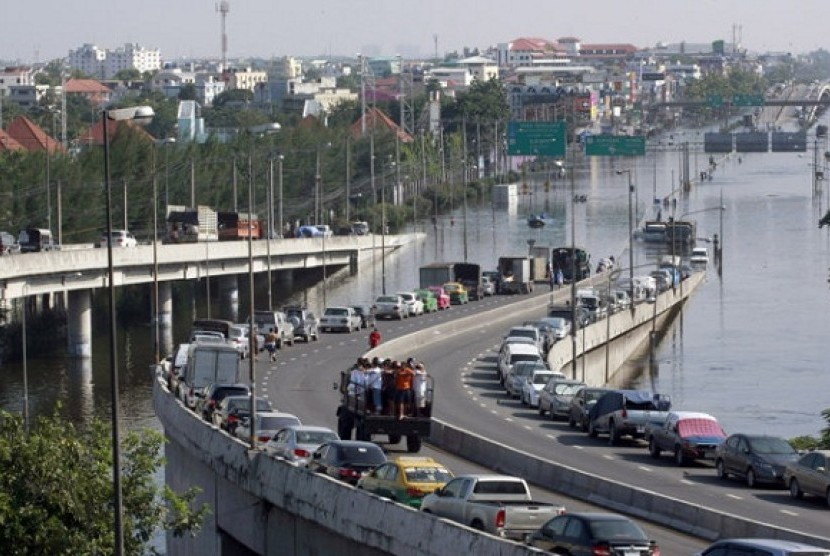REPUBLIKA.CO.ID, BONN - From Bangkok to Miami, cities and coastal areas across the globe are already building or planning defenses to protect millions of people and key infrastructure from more powerful storm surges and other effects of global warming.
Some are planning cities that will simply adapt to more water. But climate-proofing a city or coastline is expensive, as shown by New York Mayor Michael Bloomberg's 20 billion USD plan to build floodwalls, levees and other defenses against rising seas.
The most vulnerable places are those with the fewest resources to build such defenses, secure their water supplies or move people to higher ground. How to pay for such measures is a burning issue in U.N. climate talks, which just wrapped up a session in the German city of Bonn. A sampling of cities around the world and what they are doing to prepare for the climatic forces that scientists say are being unleashed by global warming:
ROTTERDAM, Netherlands
In a country where two-thirds of the population lives below sea level, the battle against the sea has been a matter of life and death for centuries.
The Dutch government devotes roughly 1 percent of its annual budget to its intricate system of dikes, dunes and sea walls. Improvements to cope just with the effects of climate change have been carried out since 2003 — though planning began well before that.
The focus in the 20th century was on a spectacular series of sea defenses, including massive steel and concrete barriers that can be quickly moved to protect against storm surges.
But current techniques embrace a philosophy of "living with water:" Floods are inevitable, and it's better to prepare for them than to build ever-higher dikes that may fail catastrophically.
Thousands of waterways are being connected so the country can essentially act as one big sponge and absorb sudden influxes of water. Some areas have been designated as flood zones. Houses that can float have been a building sensation.
Along the coast, the country has been spouting huge amounts of sand in strategic locations offshore and allowing the natural motion of waves to strengthen defensive dunes.
VENICE, Italy
Sea level rise is a particular concern for this flood-prone city. It's in the process of realizing an expensive and oft-delayed system of underwater barriers that would be raised in the event of flooding over 43 inches (110 centimeters), higher than the 31-inch (80-centimeter) level that floods the famed St. Mark's Square.
Venice, a system of islands built into a shallow lagoon, is extremely vulnerable to rising seas because the sea floor is also sinking.
The constant flooding puts the city's considerable architectural treasures at risk. Venice has experienced 10 events over 4 feet 7 inches (140 centimeters) since 1950, including a devastating 1966 flood. Plans for the new so-called Moses barriers will cost more than 4 billion euros. The first of these have been moved into place in recent days. Many Venetians remain skeptical of the project due to the high costs and concerns over environmental risks.
LONDON
The low-lying capital of a perpetually soggy country, London has long been vulnerable to flooding — particularly when powerful storms send seawater racing up the River Thames.
But Londoners already have a powerful flood defense: the 570-yard-long (half-a-kilometer-long) Thames Barrier, composed of 10 massive steel gates, each five stories high when raised against high water.
Some have called for Thames Barrier — in operation since 1982 — to be replaced or supplemented by an even more ambitious flood defense system farther down the river. But Britain's Environment Agency says the defenses should hold until 2070.
Meanwhile, environmentally conscious Londoners have made plans to battle some of the other predicted effects of global warming by promoting better water management, expanding the city's Victorian sewage network, and "urban greening" — the planting of trees and rooftop gardens to help manage the urban heat island effect.


